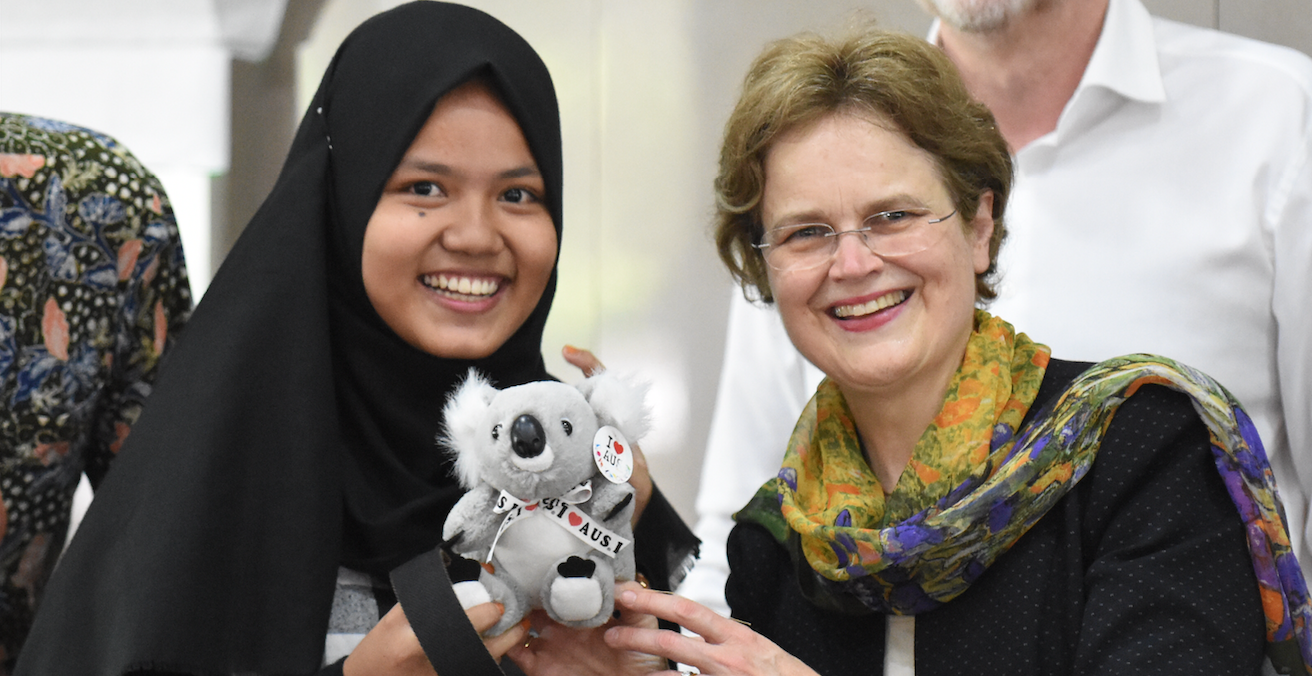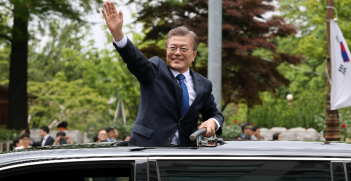Promoting Women in International Affairs: DFAT's "Women in Leadership" Strategy

The last five years have seen a marked increase in the number of women representing Australia at senior levels in the Department of Foreign Affairs and Trade (DFAT). There are many other areas where the lessons from DFAT’s Women in Leadership Strategy can be applied.
In 2014 I wrote for Australian Outlook about the underrepresentation of women in senior positions in Australia’s international affairs. What a difference five years makes.
I recently attended a lunch hosted by the DFAT Victorian State Office where Ambassador-Designate to Vietnam Robyn Mudie spoke about women in international affairs. The progress made by DFAT is impressive and should serve as a model for other organisations to improve the diversity of their leadership.
As I wrote in 2014, DFAT’s problem wasn’t in attracting women: women have been entering in equal numbers since 1985. The problem was that they were underrepresented in senior positions, with data from 2012 showing women made up less than a third of Australia’s ambassadors and high commissioners posted abroad and only 26 percent of DFAT’s Senior Executive Service.
There had been a hope that as the “pipeline” of women entering the department grew, so too would their representation at senior positions. But it’s clear that there were other factors at play that made it harder for women to rise to senior positions. First, there was the legacy of direct discrimination. Until 1966 — and even later in DFAT — women were prohibited from working in the public service once married, meaning that women entering the department faced a lack of female role models and workplaces designed for male breadwinners. Second, there was indirect discrimination, where formal or informal networks of senior managers created an exclusionary culture. Third, there was a lack of support for family responsibilities, with issues like parental leave, affordable childcare and flexible working hours for senior positions disadvantaging women in the workplace. Finally, there were socially-constructed gender norms creating expectations about the work a woman should do that limited career progression.
So what has DFAT done right?
Former DFAT Secretary Peter Varghese agreed to be one of the founding Male Champions for Change, thus signing up to a program including stepping up as a leader and dismantling the status quo on gender equality.
In December 2014 he announced that DFAT would develop a Women in Leadership Strategy to look into why women’s career progression was not equal to that of men. The subsequent Women in Leadership Strategy was launched in 2015 setting out a clear departmental goal: a workplace which maximises performance and capability by enabling all women and men to thrive equally. And it set out a way to achieve it: cultural change at all levels of the organisation.
The strategy has been continued by Frances Adamson since she followed Peter Varghese as the first female Secretary of DFAT in 2016, leading to DFAT being honoured with a 2017 Australian Public Service Gender Equality Award.
Key measures include:
Setting Targets
I remember when Peter Varghese announced that DFAT would be setting targets for women in senior leadership position at a seminar I helped organise on Australian Diplomacy Today. Unlike quotas, which he sees as being against the merit principle, targets are about “setting out an ambition that stretches you a little bit.”
The strategy sets out a commitment to inclusive leadership, stating that all managers will be assessed on whether they lead by example to build a more inclusive culture and make gender diversity a business priority. To assess progress, sex-disaggregated data is reported to staff annually to track progress.
Workplace Flexibility
A key part of the strategy is the “If not, why not?” principle which puts the onus on managers to explain why flexible work arrangements are not possible. When a request is made, a position will be presumed suitable for flexible work — including flexible, part-time, work from home or job-sharing — unless it is demonstrated why it is not suitable for sound operational reasons.
Other areas of focus include improving conditions for families at post, clarifying policies around parental leave, facilitating IT access for staff on long-term leave, supporting breastfeeding mothers including with work-related travel and providing emergency childcare arising from peak work periods.
Active Promotion of Women in Leadership
The strategy encourages a culture of “sponsorship” which calls on senior staff to identify high-potential female staff and support their career progression, especially those with flexible work arrangements. Women in Leadership Champions have been appointed at various levels across the organisation.
The principle of “50/50 if not, why not?” is used to promote gender-balanced shortlists for interviews, including for ambassadorial posts.
There have also been symbolic measures such as renaming meeting rooms after trailblazing female officers.
Tackling Unconscious Bias
The final frontier for the program is unconscious-bias training. This involves breaking down the embedded idea that the platonic ideal of an international affairs representative is still a male civil servant with a supportive wife and kids following behind. While this is an issue in many fields, it is exacerbated in DFAT, given diplomats’ representational role as literally embodying their nation abroad.
As a result of the measures in the Women in Leadership Strategy, women are verging on parity in leadership at DFAT, with female heads and deputy heads of mission jumping to over 40 percent in the past year.
DFAT sees this as providing benefits in capability and productivity as much as in non-discrimination. The strategy sets out the strong business case for improving diversity, with empirical evidence showing that diverse teams produce stronger outcomes. As a representative organisation, a more diverse department also helps DFAT better reflect the community it represents. It’s also an important part of modelling Australia’s commitment to gender equality as a foreign policy goal.
There is no question that huge hurdles remain: we don’t yet live in a gender-blind world. What’s striking is the amount of progress that has been made in a short, rather than a generational, timeframe.
There are many other areas where the lessons from DFAT’s Women in Leadership Strategy can be applied. For example, the same week I attended the lunch with Robyn Mudie I facilitated a workshop organised by La Trobe University at AIIA Victoria focusing on Women in International Relations. In academia, there is still a way to go.
There is also the issue of the underrepresentation of Asian-Australians at senior leadership levels across Australian society. Asialink is currently partnering with ANU and PwC to organise an Asian-Australian Leadership Summit in September 2019 to combat this and recognise the enormous resource Asian-Australians provide for Australia’s engagement with Asia. A similar level of commitment is needed in this area.
What the DFAT case study shows is that where there is a lack of diversity, it is not a matter of waiting for the pipeline to solve the problem. We need visionary leaders to use all the elements of the toolkit at their disposal to promote diversity for the benefit of their organisations and Australia’s international impact.
Melissa Conley Tyler is director of Diplomacy at Asialink at the University of Melbourne and an honorary presidential associate of the Australian Institute of International Affairs. She was national executive director of the AIIA for 13 years until April 2019. She tweets at @MConleytyler.
This article is published under a Creative Commons Licence and may be republished with attribution.




